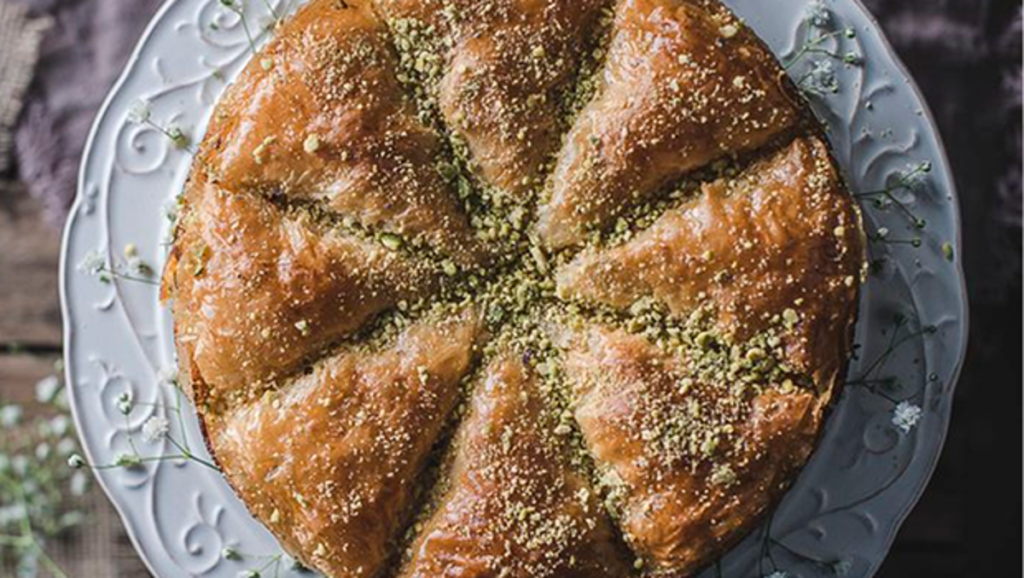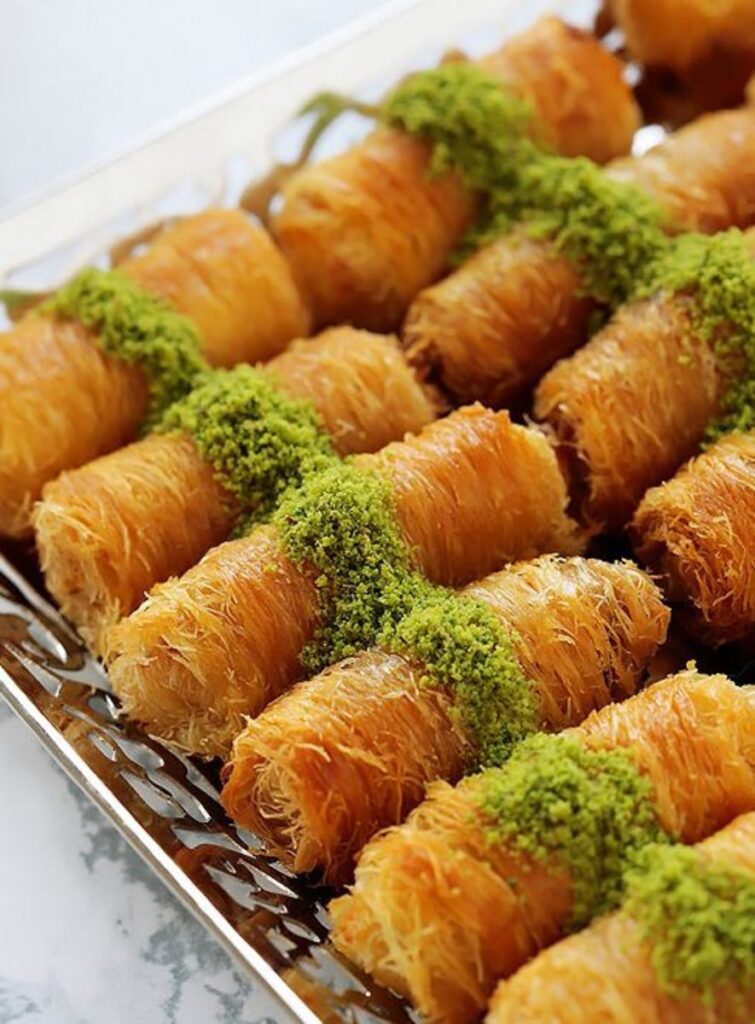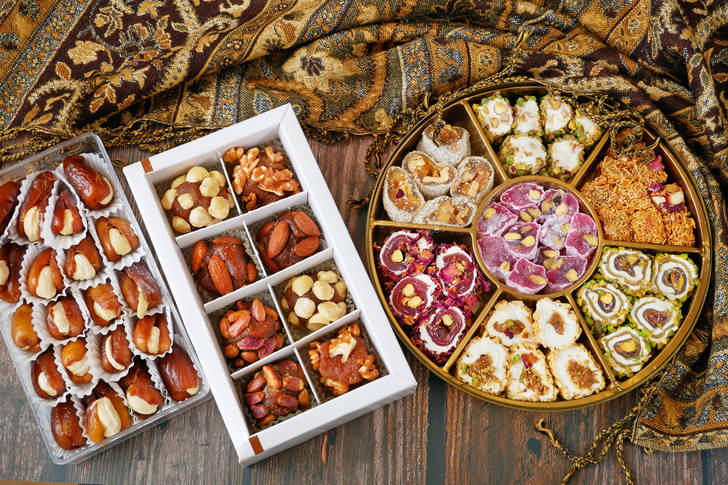Oriental sweets, with their rich flavors and intricate designs, are not just culinary delights; they are cultural artifacts that reflect the heritage and traditions of diverse societies. Much like how different cultures have their unique sweet treats, each with its own story, people also have their unique skincare routines. Some swear by collagen face cream, believing it holds the secret to youthful skin.
This article embarks on a journey through the history and tradition behind these delectable treats, exploring the profound significance they hold in various cultures across the globe.
Exploring Ancient Origins

The origins of Oriental sweets delve deep into the annals of history, tracing back to ancient civilizations where these delectable treats were not just culinary creations but symbols of cultural identity and societal norms. In Mesopotamia, the cradle of civilization, clay tablets dating back to 1700 BC offer tantalizing glimpses into the early confectionary practices of the region. These ancient recipes, etched in cuneiform script, reveal the meticulous craftsmanship and reverence for ingredients that characterized Mesopotamian sweets. Honey, a prized commodity, featured prominently in these early concoctions, often combined with nuts, fruits, and spices to create indulgent delicacies fit for royalty and commoners alike.
Similarly, in the land of the pharaohs, ancient Egypt, sweets occupied a sacred place in daily life, transcending mere sustenance to become offerings to the gods and tokens of goodwill. Hieroglyphic inscriptions and tomb paintings depict scenes of feasting and revelry, with trays laden with figs, dates, and honeyed pastries adorning banquet tables. These confections not only delighted the palate but also served as symbols of abundance and fertility, embodying the cyclical rhythms of nature and the divine order of the universe. Even the visual depiction of these sweets, through graphic design services of the time, played a role in the cultural significance of these treats.
As trade routes expanded and empires rose and fell, the tradition of Oriental sweets continued to evolve and flourish, traversing continents and cultures to become cherished staples of culinary heritage. From the spice markets of ancient Arabia to the bazaars of Byzantium, merchants, and travelers exchanged not only goods but also culinary knowledge, enriching the tapestry of flavors and techniques that define Oriental sweets to this day.
If you are driving an Oriental sweets delivery truck through the scenic landscapes of Tennessee, ensuring the safe transport of these delectable treats is crucial. This brings us to the importance of fleet truck insurance in Tennessee. Just like the trade routes of old, where merchants safeguarded their precious cargo, modern-day drivers need insurance to protect their Oriental sweets delivery trucks.
Cultural Symbolism and Rituals
Beyond their gastronomic appeal, Oriental sweets are steeped in symbolism and imbued with cultural significance, serving as conduits for expressing emotions, cementing social bonds, and marking significant milestones. In many Middle Eastern cultures, the act of sharing sweets is considered a gesture of hospitality and generosity, embodying the spirit of communal solidarity and kinship. Whether served alongside steaming cups of mint tea or presented on ornate trays during festive gatherings, sweets play a central role in fostering connections and building rapport among guests.
Imagine a well-manicured garden, bursting with vibrant blooms and lush greenery. This isn’t just a pleasing sight, it’s a reflection of meticulous care and thoughtful planning. Just like a company for landscaping in Florida cultivates a beautiful outdoor space, Oriental sweets act as an art form, meticulously crafted to not only tantalize the taste buds but also hold cultural significance and serve as a bridge between people.
Moreover, Oriental sweets feature prominently in religious and ceremonial contexts, where they serve as offerings to honor deities, commemorate rites of passage, or invoke blessings for auspicious beginnings. In Hindu tradition, for example, sweets such as modak and barfi are offered to the elephant-headed god Ganesh during the annual festival of Ganesh Chaturthi, symbolizing devotion and seeking his divine blessings for success and prosperity. Similarly, in the Islamic world, sweets like ma’amoul and basbousa are prepared during Eid al-Fitr, the festival marking the end of Ramadan, to celebrate the joyous occasion and share blessings with family and friends.
Innovation and Adaptation
While deeply rooted in tradition, Oriental sweets have also undergone a process of continual innovation and adaptation, reflecting changing tastes, culinary trends, and technological advancements. Modern pastry chefs and confectioners, inspired by the rich heritage of Oriental sweets, are constantly pushing the boundaries of creativity, experimenting with new ingredients, flavor combinations, and presentation techniques to create contemporary interpretations of classic favorites.
From the bustling streets of Istanbul to the chic patisseries of Paris, innovative artisans are reimagining traditional sweets with a modern twist, infusing them with unexpected flavors, textures, and forms to cater to evolving palates and dietary preferences. Vegan and gluten-free alternatives are becoming increasingly popular, as consumers seek healthier and more sustainable options without compromising on taste or indulgence. Furthermore, the advent of social media has provided a platform for pastry chefs and food enthusiasts to showcase their creations to a global audience, sparking trends and inspiring culinary experimentation across borders and cultures.
This fascinating glimpse into the world of international pastry is a far cry from the more grounded concerns of keeping your basement dry. While skilled artisans are busy reimagining éclairs and macarons, homeowners in Kansas City might be facing a different kind of culinary challenge – a damp basement that’s more suited for growing mushrooms than storing fine wines. If you find yourself in this situation, fear not! There are reputable companies for basement waterproofing in Kansas City that can help you transform your leaky cellar into a usable and enjoyable space. With their expertise, you can say goodbye to musty odors and hello to a dry and functional basement, ready for whatever your creative vision desires.
As Oriental sweets continue to captivate the imagination of food lovers around the world, the fusion of tradition and innovation promises to keep this cherished culinary heritage alive and vibrant for generations to come.
If you want to look stylish while buying Oriental sweets, consider pairing your outfit with a Manchester United jersey for an effortlessly cool look.
Preserving Heritage and Identity

In an age of rapid globalization and cultural homogenization, the preservation of culinary heritage has never been more critical. Oriental sweets, with their deep roots in history and tradition, serve as repositories of cultural identity and collective memory, anchoring communities to their shared past and guiding them toward a future that honors and celebrates diversity. Efforts to safeguard this intangible heritage are underway in various forms, ranging from grassroots initiatives led by local communities to international collaborations involving governments, NGOs, and cultural institutions.
One such initiative is the documentation and digitization of traditional recipes and cooking techniques, ensuring that the knowledge and skills associated with Oriental sweets are preserved for future generations. By compiling cookbooks, filming instructional videos, and creating online repositories, culinary historians and cultural activists are not only safeguarding endangered recipes but also democratizing access to this wealth of culinary knowledge, empowering individuals to reconnect with their culinary heritage and rediscover lost traditions. Additionally, embracing inclusivity in culinary arts extends to diverse representation, including themes like a plus size boudoir session, which celebrates body positivity and inclusivity in photography and self-expression.
Furthermore, festivals, workshops, and culinary tours play a vital role in promoting awareness and appreciation for Oriental sweets, providing platforms for artisans and enthusiasts to share their passion for traditional confections and engage in dialogue about their cultural significance. Whether it’s a sugar-soaked festival in the souks of Marrakech or a hands-on baklava-making workshop in Athens, these immersive experiences offer participants a deeper understanding of the cultural contexts and culinary techniques that underpin Oriental sweets, fostering a sense of pride and ownership in their culinary heritage.
If your charming oriental sweets shop, brimming with delectable treats, encounters any foundation issues, don’t hesitate to seek the assistance of a company for foundation repair in Fort Worth. Addressing these concerns promptly can ensure the continued stability and longevity of your cherished establishment, allowing you to focus on what truly matters: sharing the magic of Oriental sweets with your community.
The Art of Confectionery: Mastering Technique and Craftsmanship
Central to the allure of Oriental sweets is the meticulous craftsmanship and mastery of confectionery techniques passed down through generations. From the delicate layers of phyllo dough in baklava to the intricate piping of sugar syrup in Turkish delight, each sweet is a testament to the skill and artistry of its creator. Traditional methods, often honed over centuries, require precision and patience, as artisans work tirelessly to achieve the perfect balance of flavors and textures.
The art of confectionery, however, extends beyond mere preparation; it weaves in cultural nuances and aesthetic sensibilities like a turbine flow meter gracefully measures the flow of liquid sugar. Decorative motifs inspired by nature, geometry, and folklore adorn many Oriental sweets, adding an extra layer of beauty and symbolism to these edible works of art. Whether it’s the floral patterns adorning Moroccan pastries or the geometric designs of Indian mithai, every sweet tells a story, inviting us to appreciate the intersection of taste and tradition.
In an age of mass production and mechanization, there is a renewed appreciation for the artisanal craftsmanship that defines Oriental sweets. Artisans and confectioners, often operating in small family-run establishments, take pride in preserving heritage recipes and techniques, ensuring that each sweet is imbued with the authenticity and charm of its cultural origins. As consumers increasingly seek out handcrafted and artisanal products, the art of confectionery continues to thrive, serving as a testament to the enduring appeal of tradition and craftsmanship. For those seeking to complement their lifestyle with health-conscious choices, a vegan supplements pack seamlessly fits into this narrative of mindful consumption and well-being.
The Cultural Significance of Ingredients: Exploring Flavor Profiles and Symbolism
At the heart of Oriental sweets lie a diverse array of ingredients, each chosen not only for its taste but also for its cultural significance and symbolism. From the ubiquitous use of nuts and spices to the subtle infusion of floral essences and aromatic syrups, every ingredient plays a vital role in shaping the flavor profile and identity of these cherished delicacies. Cheyanne Mallas PA, an entrepreneur and Physician Associate, highlights the cultural importance of these ingredients, noting that they can represent prosperity, and longevity, and even ward off evil spirits. Moreover, many ingredients carry deep symbolic meanings rooted in ancient traditions and beliefs, adding layers of complexity to the culinary narrative.
For example, almonds, pistachios, and walnuts, commonly found in Oriental sweets, symbolize prosperity, fertility, and abundance in many cultures across the Middle East and Mediterranean. Similarly, aromatic spices like cinnamon, cardamom, and saffron not only lend depth and complexity to flavors but also evoke memories of distant lands and exotic locales. Furthermore, ingredients like rose water and orange blossom water, derived from fragrant flowers, imbue sweets with a subtle floral aroma and a touch of romance.
If you’re stopping by an Oriental sweets shop and want to amp up your appearance, consider adding baseball hats wholesale to your ensemble.
As we savor each bite of Oriental sweets, we are invited to embark on a sensory journey that transcends culinary boundaries and delves into the cultural tapestry of the regions from which they originate. The careful selection and combination of ingredients reflect the values, beliefs, and traditions of diverse societies, serving as a tangible expression of cultural identity and heritage. In a world where food has the power to unite and bridge divides, Oriental sweets remind us of the rich tapestry of human experience and the universal language of taste.
After trying Oriental sweets, check out local pet fair events. Like the yummy treats, pet fairs bring together people and their furry friends. It’s a fun time with wagging tails, cute barks, and lots of pet love. Whether you’re a pet fan or just curious, going to a pet fair is a cool way to enjoy your community. So, after enjoying the tasty sweets, why not see what’s happening at the pet fair nearby?
Celebrating Sweet Traditions: Festivals, Ceremonies, and Rituals

Throughout history, Oriental sweets have been an integral part of festive celebrations, religious ceremonies, and cultural rituals, serving as symbols of joy, abundance, and hospitality. Across the Middle East, South Asia, and North Africa, elaborate spreads of sweets are prepared to mark auspicious occasions such as weddings, births, and religious festivals. These communal gatherings provide an opportunity for families and communities to come together, share in the joyous occasion, and strengthen social bonds.
If you’re visiting Oriental sweets festivals, make sure to pack your makeup into recycled cosmetic packaging. Not only will you be kind to the environment, but you’ll also be contributing to a more sustainable future.
Moreover, Oriental sweets often play a central role in religious ceremonies and rituals, serving as offerings to deities or as tokens of gratitude and reverence. In Hindu temples, trays of sweets are presented to the gods during puja ceremonies, symbolizing devotion and seeking blessings for prosperity and well-being. Similarly, in Islamic traditions, sweets like dates and baklava are distributed among family, friends, and the less fortunate during Eid al-Fitr, marking the end of Ramadan and fostering a sense of unity and generosity.
As custodians of tradition and heritage, Oriental sweets, much like the excitement of choosing and customizing RC car bodies, continue to inspire reverence and awe, serving as conduits for the transmission of cultural values and ancestral wisdom. Whether enjoyed during festive gatherings or shared as tokens of affection, these timeless delicacies, just like the carefully selected and painted RC car bodies, remind us of the enduring power of tradition to bring joy, meaning, and connection to our lives.
Conclusion
In conclusion, the journey through the cultural tapestry of Oriental sweets unveils a rich tapestry of tradition, craftsmanship, and symbolism. From the ancient origins of confectionery to the modern-day celebrations and rituals that honor these cherished delicacies, Oriental sweets serve as ambassadors of culture and heritage, bridging continents and generations with their timeless allure. As we continue to savor each bite, let us not only delight in the sweetness of the moment but also pause to appreciate the centuries-old traditions and rituals that have shaped the culinary landscape of the Orient.
